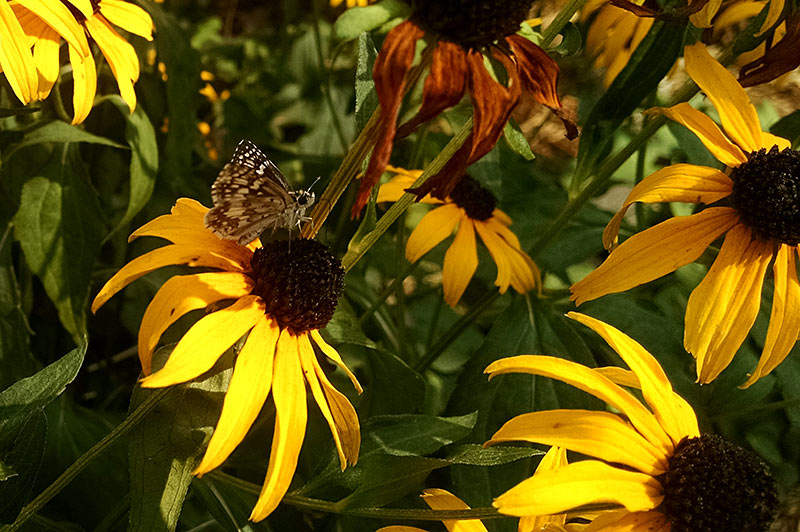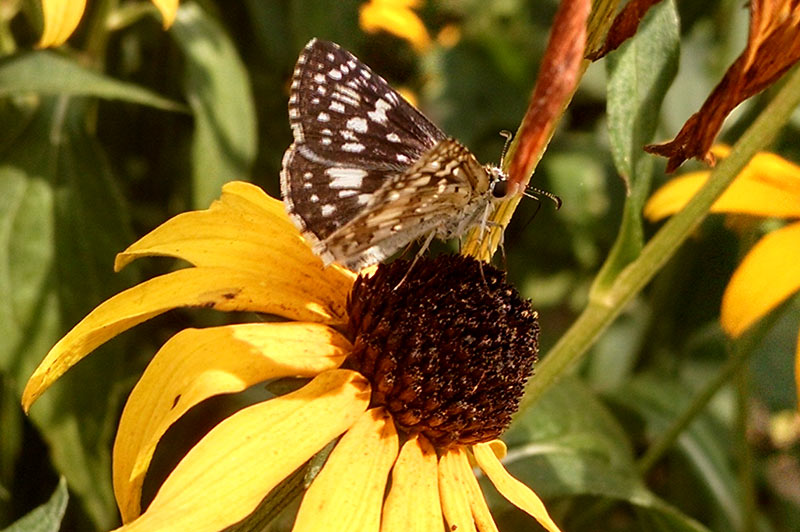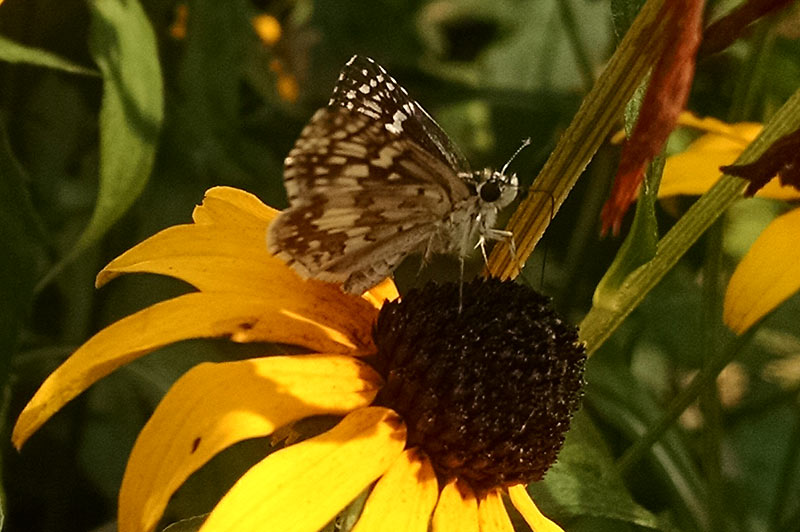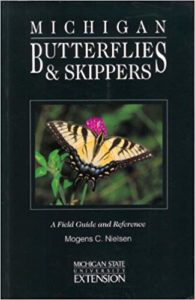We’ve been having a great season for spotting critters on the Lot. When I was outside watering today, I caught site of several smaller butterfly or moth-looking insects. They were busy browsing the back garden for something to eat. I took some up-close and personal photos to ID one of the little winged insects.

Butterfly or Skipper?
One of the first things I discovered was this small insect is referred to as a skipper. Skippers belong to the Family Hesperiidae, whose Order is Lepidoptera. Lepidoptera is an order of insects that includes both butterflies and moths. Unlike many of its larger more colorful relatives, skippers are smaller, usually wear duller colors, and dart about rather than gracefully wander around the garden. Both their bodies and eyes are on the larger size compared to the wings. A distinct feature of a skipper are the “hook-like projections at the ends of their clubbed antennae.”
Checkered Skipper
Here is a peak at the upper pattern on this one’s wings. I lucked out ID’ing my first skipper because it doesn’t seem many in Michigan have the higher contrast pattern with white and dark brown / black patterning. Most skippers have a combination of browns, goldenrod, orange, and dusty yellows on their wings. Not this one!

Here’s a better look beneath a wing and at the body, head, and eyes. 
After flipping through the guide, I’m feeling pretty sure this is a Checkered Skipper (Pyrgus communis). At first I thought it might be a Grizzled Skipper, but that species only has a single brood with a flight time between the beginning of May to the beginning of June. This is August, which falls well within the flight time of the Checkered Skipper, mid June until the end of October.
Field Guide for Michigan Butterflies
 The field guide I’ve been using this season is Michigan Butterflies & Skippers by Mogens C. Nielsen. You can pick it up at the MSUE store or call your favorite local bookstore.
The field guide I’ve been using this season is Michigan Butterflies & Skippers by Mogens C. Nielsen. You can pick it up at the MSUE store or call your favorite local bookstore.
It doesn’t have photos of all species caterpillars, but it has a great collection of photos displaying upper and lower wings of male and female specimens. The book also includes notes on adult food sources, host plants, habitat, distribution across the state (with map), flight period, and any special remarks for each species.
Wow, thank you for this post & great pictures! Even though I’m familiar with skippers, I still have to take a second look to know for sure. I will keep this for valuable reference. And we have checkered skippers in Austin, Texas, too!
Hi there, Linda! You’re welcome. I didn’t realize this little skipper’s species had such a large range. Thank you for sharing the fun fact. 🙂